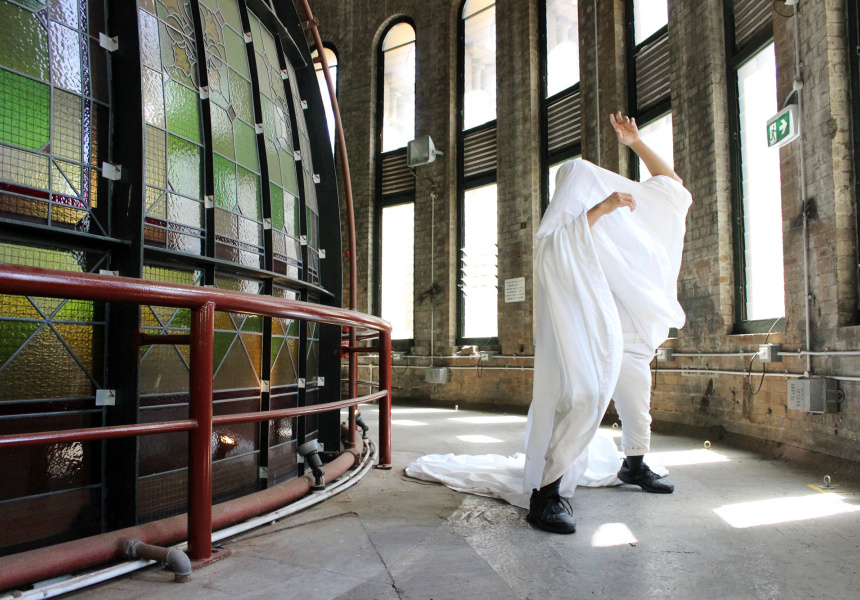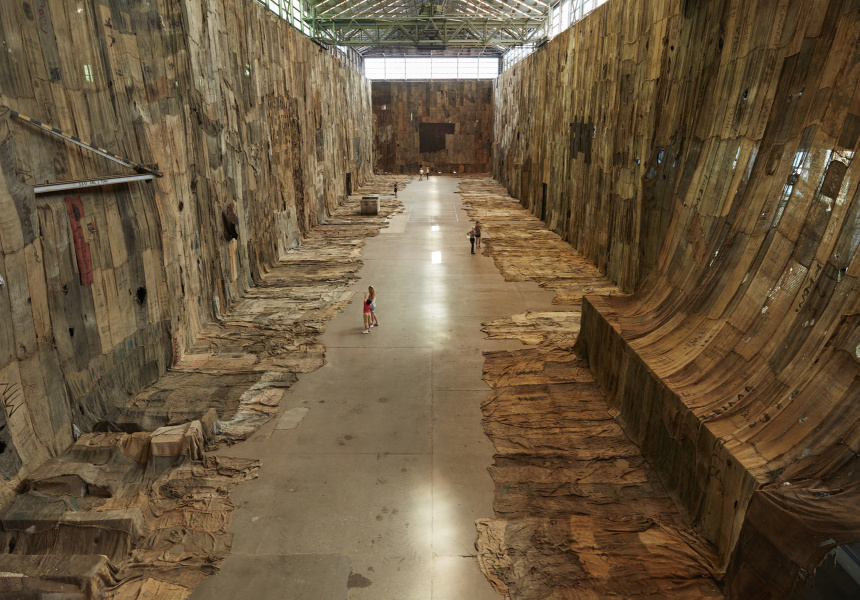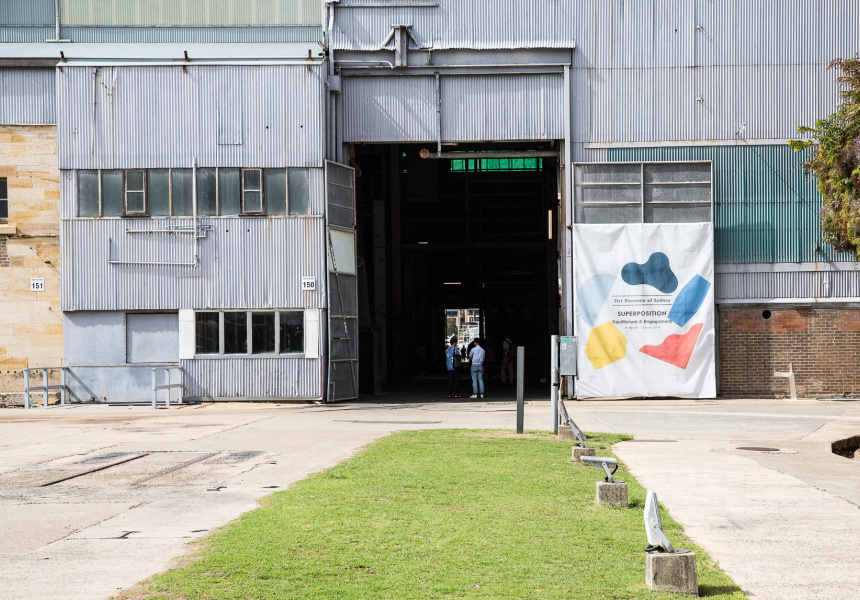The 22nd Biennale of Sydney is a mammoth beast. It happens over 87 days, includes more than 700 works by 101 artists and collectives (39 from Australia), and is shown in classic art institutions and also some cool non-traditional venues.
The Biennale kicks off tomorrow, Saturday March 14, and run until June 8. It occurs every second year and, according to organisers, is the most-attended contemporary visual arts event in the country. Some shows are on a couple nights, while others run the entire three months.
This is the first time the director is Indigenous, and Brook Andrew has named this year’s program Nirin, the Wiradjuri word for edge. That theme will be complemented by seven supplementary themes, including dhaagun (“earth”, or sovereignty and working together), yirawy-dhuray (“yam connection”, or food) and muriguwal giiland (different stories). Overall, the biennale will focus on how artists can both inspire and lead in the face of environmental disaster and global conflict. And as the country commemorates the 250th anniversary of Captain Cook’s landing, the festival will reassess the meaning of that event.
Stay in the know with our free newsletter. The latest restaurants, must-see exhibitions, style trends, travel spots and more – curated by those who know.
SIGN UPHere are some of the things we think are worth checking out.
Catch a boat to Cockatoo Island
Once again, Cockatoo Island will be a hub for the Biennale. This year attendees can sail on the Nirin Haiveta, a boat-turned-artwork that has been decorated with a design that reflects the mark-making of Pasifika women (from the Pacific region). It’ll be transporting members of the public from Sydney Olympic Park Wharf to Cockatoo Island, free of charge, every Saturday of the festival, to help people who live in Sydney’s west access the festival more easily.
When you get there, seek out the pop-up greenhouse created by Indigenous artist Tony Albert. Inside, guests can use paper embedded with kangaroo-grass seeds to compose letters to young people who are incarcerated in western Sydney. They’ll plant the letters as part of the revegetation project at the Blacktown Native Institution.
Research group Adrift Lab, which focuses on seabirds and marine plastics, will spotlight the impact of plastic pollution in our oceans, and how it affects marine life in a special space on the island. It’ll combine art, science and education to teach people about its work.
A raft of talks, art installations and workshops will also take up residence on the picturesque harbour island for the duration of the festival. Cockatoo Island is open from 10am to 5pm daily. More information here.
Ghost stories in unusual places
The recently renovated inner dome at the Queen Victoria Building (QVB) will be on display to the public for the first time for four performances by Samoan-Australian artist
Brian Fuata, known for his improvisation work. The intimate shows are free, run for 30 minutes and are open to 15 people per session.
The show, Brian Fuata: Apparitional Charlatan – Minor Appearances, is different depending on where it’s being performed (it’s also happening on the steps of the Museum of Contemporary Art and National Art School as part of the festival), but each performance will see Sydney-based Fuata dress as a white-sheeted ghost. At the QVB he’ll use the building’s history, heritage and spooky past to tell a story about (in his words) “the portals that hang between truth and action”.
Brian Fuata: Apparitional Charlatan – Minor Appearances is at MCA on March 14 and 15, and the National Art School from April 5 to 26. More info here. (Get tickets for the QVB shows, from April 11 to 18, here).
April 29: the 250th anniversary of Captain Cook’s landing
There are a couple things happening to mark the date during Biennale. To Cook Cook or Not is a panel discussion at the Sydney Town Hall on April 29 (from 6pm to 9pm, buy tickets here) featuring First Nations artists.
There’ll also be a free cleansing and welcoming ceremony on April 29 at 10am on a Lilyfield pedestrian bridge. From then and until May 15, the Flag Project will be hoisted above the bridge and its nearby surrounds. The large-scale art installation – with 250 Aboriginal flags linking community to ideas about land and country, belonging and possession – was first installed at Barangaroo during Sydney Festival.
Go for a bushwalk in a national park
Take a stroll through Dharawal National Park in western Sydney with Aboriginal Discovery Ranger Aunty Deidre Martin, and learn about the bush from a Koori perspective. The walk will take in the 2.8-kilometre (return) O’Hares Creek Lookout track, where you might spot goannas and wallabies alongside scribbly gum and red bloodwood trees.
Indigenous Bush Walk with Aunty Deidre Martin runs from 9am to 10.30am on various dates throughout the festival. More info and tickets here.
Visit the former Parramatta Girls Home
A host of storytellers will take over the Parramatta Female Factory Precinct – formerly the Parramatta Girls Home, which housed “criminal” and orphaned children, as well as members of the Stolen Generations from 1821 to 1983. There’ll be talking circles, activations by female artists and guided tours of the historical site, which will take in the marks inscribed on the walls by the women who were housed there. A “long table” will also be held with a series of speakers. Members of the public are invited to join the speakers at the table and engage in a non-hierarchical dialogue.
Free guided tours of the Parramatta Female Factory Precinct will take place every Tuesday of the festival from 11am. More information and tickets here. The free Sites of Conscience Long Table will be held from 1pm to 3pm on May 28. More information and tickets here.
The Biennale of Sydney starts on Saturday March 14 and runs until June 8 at various venues across the city. Most events are free.
If you’re concerned about attending public gatherings in light of Covid-19, check the latest updates from NSW Health.



